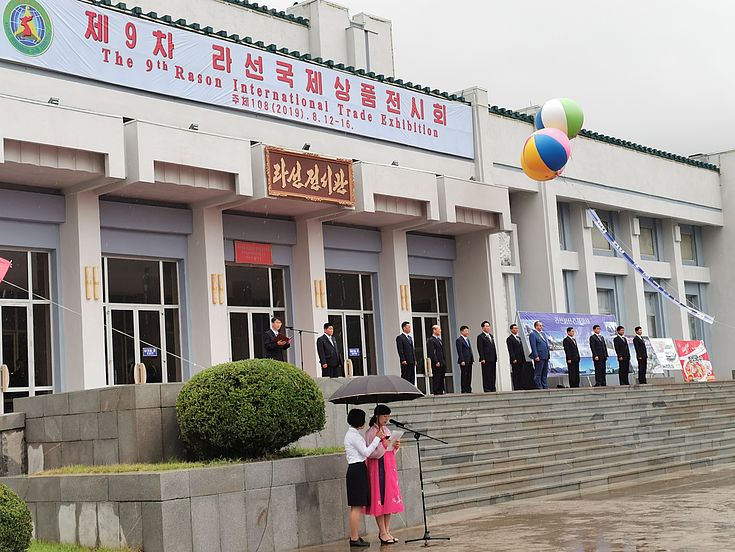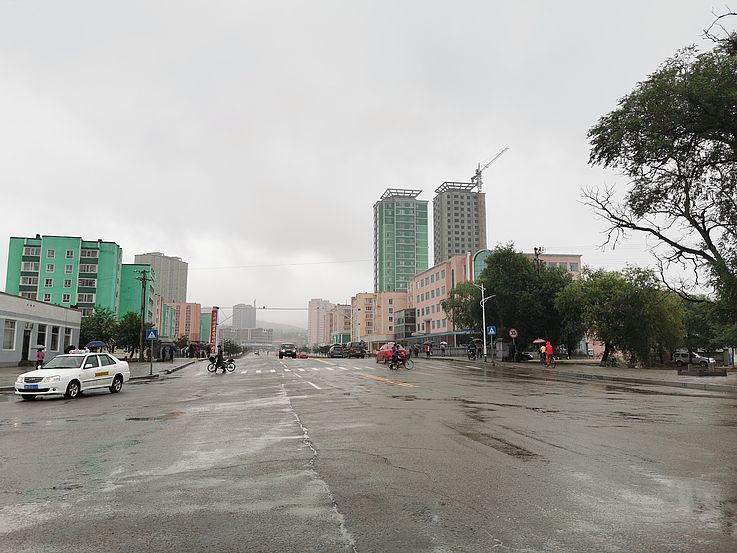Exhibition
Migratory Birds and Sustainable Development at the Rason International Trade Exhibition
A part of the zone is also declared as the Rason Migratory Bird Reserve, referring to its unique habitat and its significance for biodiversity. Hanns Seidel Foundation Korea has been working for the last ten years to support sustainability and conservation in the zone while acknowledging that economic development is also crucial and an inextricable part of it. Every year in August HSF Korea is taking part at the Rason International Trade Exhibition (RITE). This year, around 90 exhibitors offered consumer goods, health & beauty products, clothes, fishery products, and other items. Compared to previous years (it was the 9th RITE, and HSF took part 8 times) the scope of the fair reduced, also with relatively more North Korean exhibitors (66 percent), less Chinese exhibitors (28 Percent) and only a few foreign participants.

While trade, industry, and economy are the focus of the exhibition, the booth of Hanns Seidel Foundation somewhat stands out. The exhibition of HSF shows an exhibition about migratory birds, the East Asian – Australasian Flyway and the wetlands in Rason SEZ.
The East Asian–Australasian Flyway is one of the world's great flyways of migratory birds, reaching from Russia, Alaska, and Mongolia, via the Korean Peninsula to Australia and New Zealand. The flyway passes through 22 countries with approximately 55 migratory species traveling along with it, equating to about 5 million birds. In 2018, North Korea acceded the Ramsar Convention on Wetlands and the East Asian – Australasian Flyway Partnership (EAAFP). There are currently 37 Partners including South Korea, North Korea, and also the Hanns Seidel Foundation.

Opening Ceremony of the Rason Trade Exhibition
The wetlands of Rason Migratory Bird Reserve were also declared a protected area within the frameworks of the Ramsar Convention (Wetland of International Importance) and the EAAFP (Flyway Network Site). HSF together with one of its main partners related to the research about biodiversity on the Korean Peninsula, Birds Korea and its director and founder Dr. Nial Moores, did four short bird surveys in Rason between March 2014 and April 2017. A total of 228 species, including eight in Ramsar-defined internationally significant concentrations, 12 globally threatened. Further surveys followed, and the results were used for declaration as protected areas.

The Hanns Seidel Foundation brings together the actors in North Korea, especially the North Korean Ministry of Environment and Land Protection, with representatives of international organizations and national governments. At the same time, training in the DPR Korea and abroad, conferences and practical environment surveys in North Korea are being conducted to improve the expertise of decision-makers in the environmental sector. This shall not only be beneficial for the environment but primarily for the local population in North Korea. For this reason, a large part of the projects is also focusing on the question of how people can benefit from the conservation of wetlands. Between the conflicting priorities of economic development and environmental protection, the improvement of the living conditions of the local population is most important. Through pilot projects in the country, the awareness for the links between environmental protection, the improvement of the living conditions of the rural population and sustainable development has been raised. This becomes particularly obvious in the Rason Special Economic Zone where the management and marketing of the local Rason Migratory Bird Reserve are being included in the planning and strategies of political actors and combined with the focus on economic development. The exhibition at the 9th RITE contributed to raising awareness about the birds of Rason, the wetlands in the Rason Migratory Bird Reserve and the international efforts on the East Asian – Australasian Flyway to conserve these critical areas.

